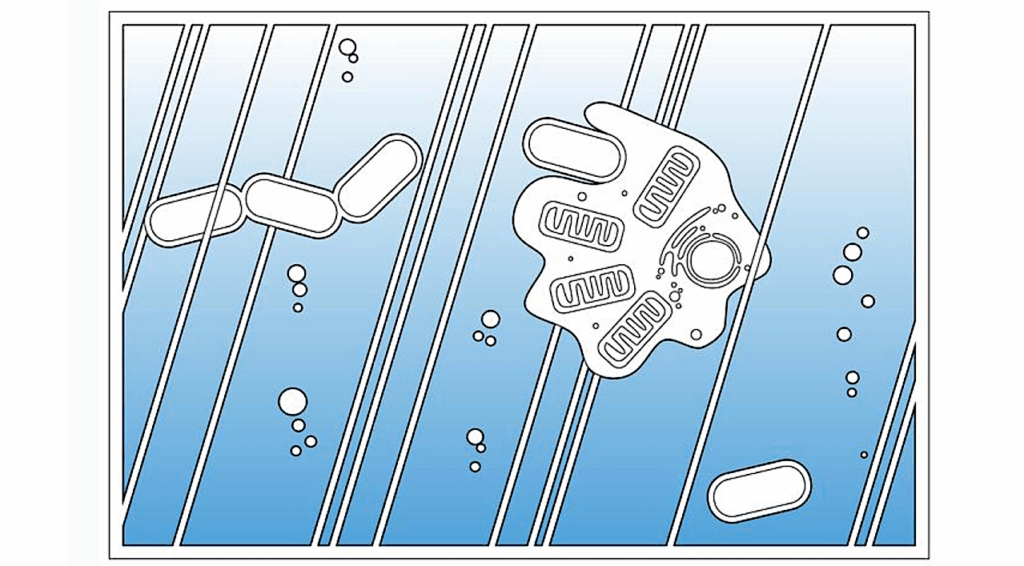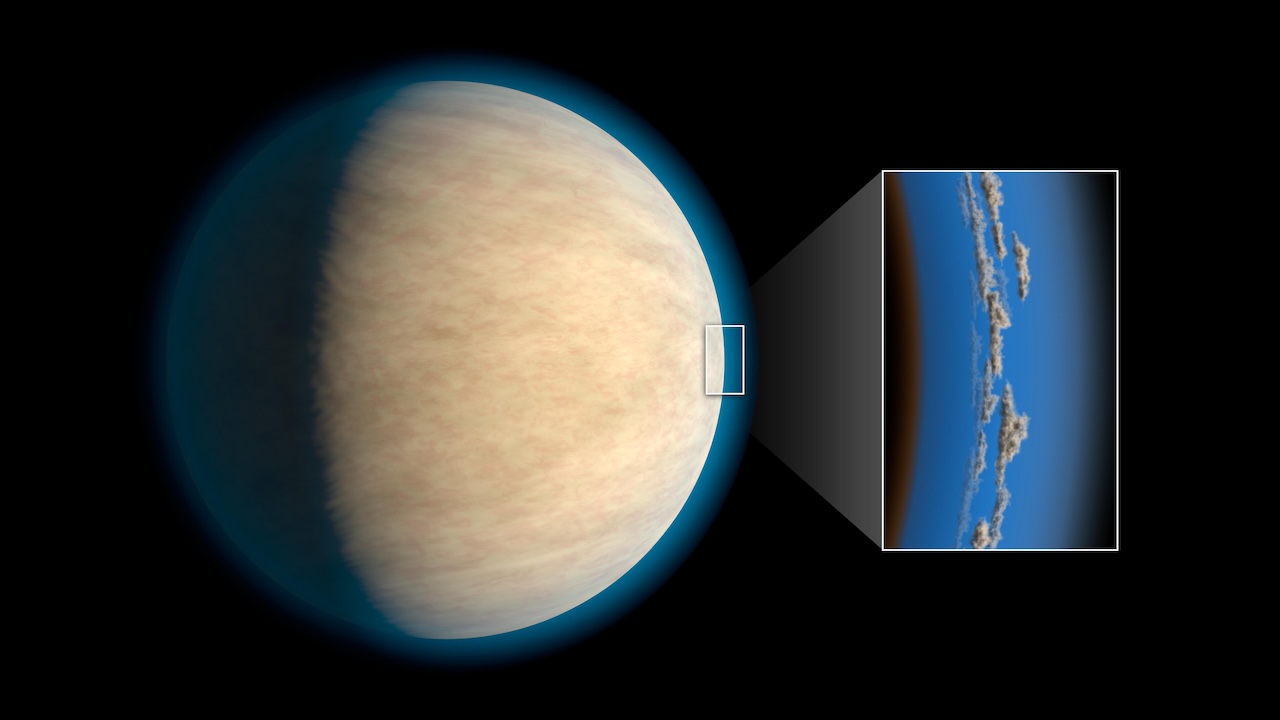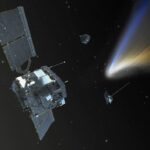Now Reading: Nascent Chemical Complexity In Prestellar Core IRAS 16293E: Complex Organics And Deuterated Methanol
-
01
Nascent Chemical Complexity In Prestellar Core IRAS 16293E: Complex Organics And Deuterated Methanol
Nascent Chemical Complexity In Prestellar Core IRAS 16293E: Complex Organics And Deuterated Methanol
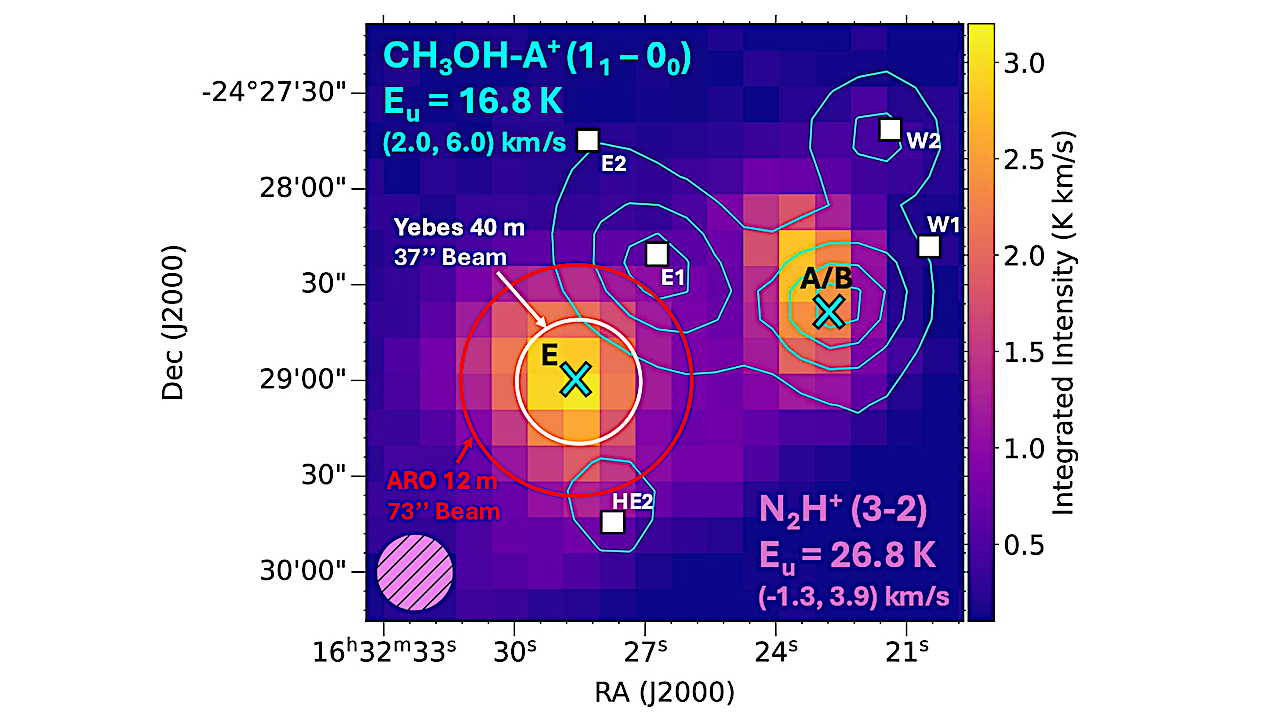
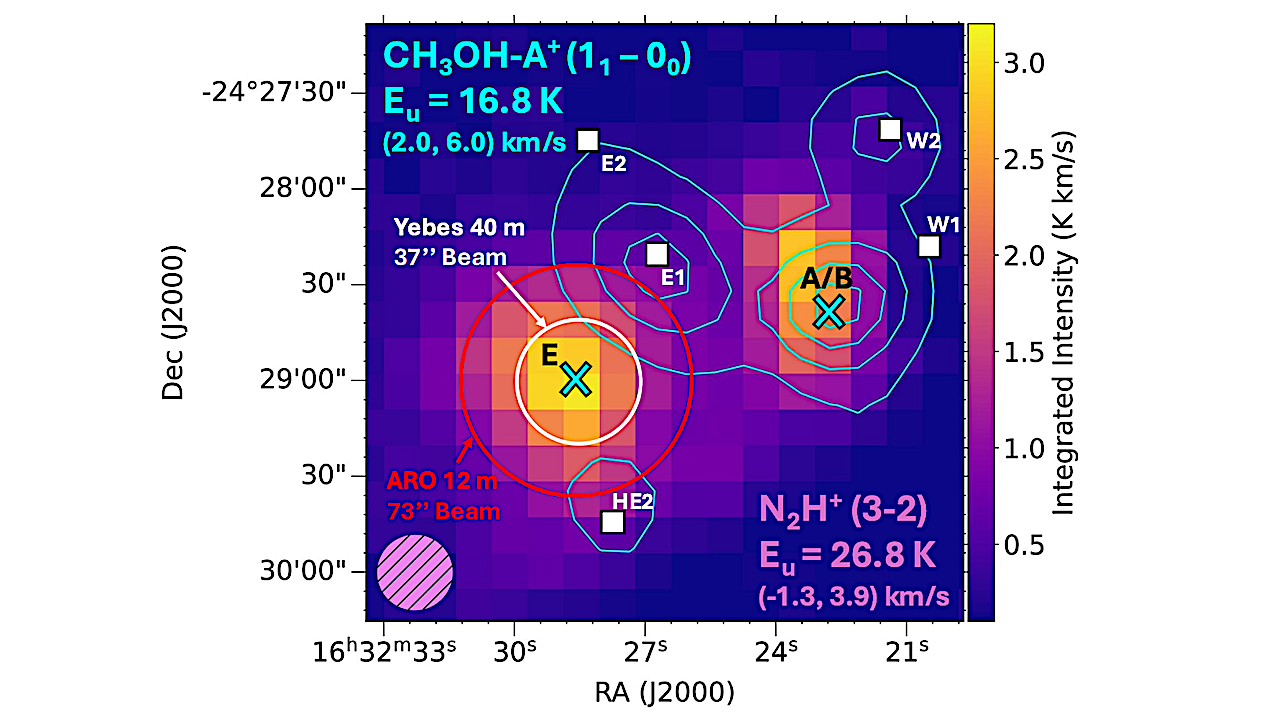
Map of the IRAS 16293-2422 region from publicly available APEX data presented in Kahle et al. 2023, where the colormap is N2H + (3-2) at 279.511 GHz and the cyan contours show the CH3OHA + 11 − 00 b-type transition at 350.905 GHz (beam size for N2H + is 23.7″ and shown in bottom left). Crosses designate where the IRAS 16293E prestellar core, labeled ‘E’, and the IRAS 16293A and B protostars labeled as ‘A/B’, sit. Other emission regions studied in Kahle et al. 2023 are labeled by white squares. For the single-pointing observations presented here, we also show the largest beam size (ARO 12 m beam at 73″) and the smallest beam size (Yebes 40 m beam at 37″ ). astro-ph.GA
Prestellar cores represent early sites of low-mass (M ≤ few M⊙) star and planet formation and provide insight into initial chemical conditions of complex organic molecules (COMs).
Deuterated COMs trace the degree of molecular inheritance and/or reprocessing, as high deuteration in protostellar systems suggests COMs forming during the prestellar stage when deuteration is enhanced.
Within the L1689N molecular cloud, the prestellar core IRAS 16293E sits 90″ eastward of the chemically-rich IRAS 16293-2422 A and B protostellar system. A unique view of star formation inside a common natal cloud, IRAS 16293A, B, and E all show some of the highest levels of deuteration in the ISM, with a number of D/H ratios 105 times higher than Solar.
We investigate for the first time the deuteration levels of the simplest COM, methanol (CH3OH), in IRAS 16293E. Using the Arizona Radio Observatory (ARO) 12 m telescope, we target favorable transitions of CH2DOH, CHD2OH, 13CH3OH, and several higher complexity COMs (including acetaldehyde, CH3CHO, methyl formate, HCOOCH3, and dimethyl ether, CH3OCH3) in the 3 mm band. Follow-up observations with the Yebes 40 m telescope provided additional transitions in the 7 mm (Q-band).
We report the first detections of these COMs and deuterated methanol in prestellar core IRAS 16293E and use our observations to calculate excitation temperatures, column densities, and relative abundance ratios. Striking similarities are found between relative molecular ratios and D/H values when comparing IRAS 16293E to the A and B protostars, as well as to a heterogeneous sample of other prestellar cores, protostars, and the comet 67P/Churyumov-Gerasimenko.
Our results support the idea that there is a limited amount of chemical reprocessing of COMs when prestellar cores collapse and heat-up during the protostellar phase.
Samantha Scibelli, Maria N. Drozdovskaya, Paola Caselli, Judit Ferrer Asensio, Beatrice Kulterer, Silvia Spezzano, Yuxin Lin, Yancy Shirley
Comments: 18 pages; Accepted for publication in A&A
Subjects: Astrophysics of Galaxies (astro-ph.GA); Earth and Planetary Astrophysics (astro-ph.EP); Solar and Stellar Astrophysics (astro-ph.SR)
Cite as: arXiv:2508.04762 [astro-ph.GA] (or arXiv:2508.04762v1 [astro-ph.GA] for this version)
https://doi.org/10.48550/arXiv.2508.04762
Focus to learn more
Submission history
From: Samantha Scibelli
[v1] Wed, 6 Aug 2025 18:00:00 UTC (5,852 KB)
https://arxiv.org/abs/2508.04762
Astrobiology, Astrochemistry,
Stay Informed With the Latest & Most Important News
Previous Post
Next Post
-
 012024 in Review: Highlights from NASA in Silicon Valley
012024 in Review: Highlights from NASA in Silicon Valley -
 02Panasonic Leica Summilux DG 15mm f/1.7 ASPH review
02Panasonic Leica Summilux DG 15mm f/1.7 ASPH review -
 03How New NASA, India Earth Satellite NISAR Will See Earth
03How New NASA, India Earth Satellite NISAR Will See Earth -
 04And Thus Begins A New Year For Life On Earth
04And Thus Begins A New Year For Life On Earth -
 05Astronomy Activation Ambassadors: A New Era
05Astronomy Activation Ambassadors: A New Era -
06SpaceX launch surge helps set new global launch record in 2024
-
 07Space Force plans new ‘Futures Command’ amid pressure to speed up modernization
07Space Force plans new ‘Futures Command’ amid pressure to speed up modernization














